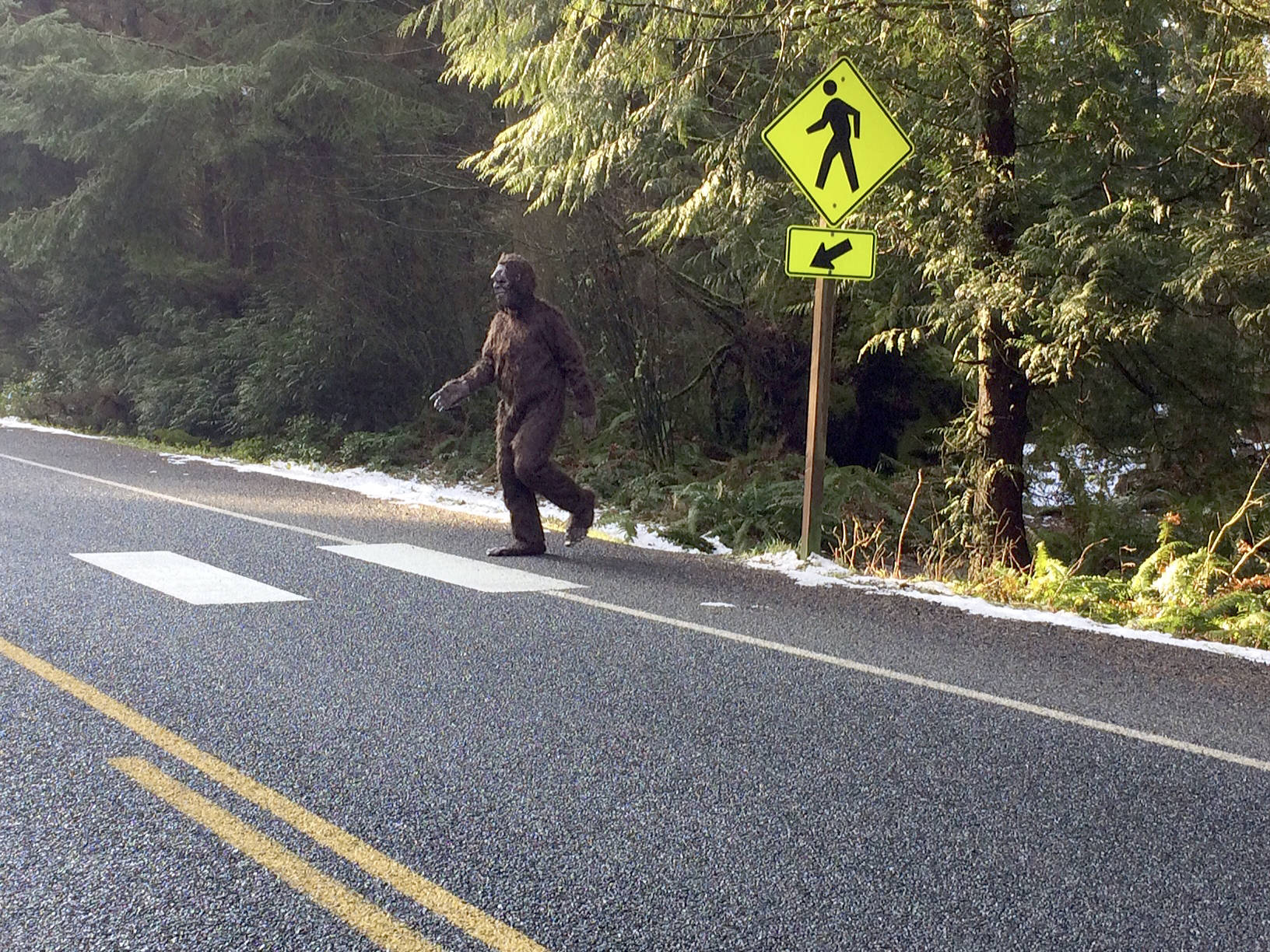B igfoot is leaving a trail of speculation in his or her wake across South Whidbey as sightings of the large, legendary beast increase daily.
He (or she, hard to tell) has been spotted coming out of the woods, going into a movie theater, waiting at a bus stop, photo bombing tourist selfies, charging up an electric car and buying a local newspaper.
“Bigfoot has been seen from Greenbank to Langley,” said Maribeth Crandell with Island Transit. “I think he likes South Whidbey State Park and the local farms where he finds lots to eat.”
Langley Mayor Tim Callison reported that Bigfoot shocked several dozen out-of-town visitors over the weekend. They were admiring the pedestrian-friendly layout of downtown and learning about the community’s successful tourism ventures as part of a conference.
“I saw him Sunday afternoon while I was escorting 40 visitors from the National Main Street Convention that is being held in Seattle,” Callison said. “He was wearing a button saying ‘Save the salmon/Breach the dams.’”
Crandell, who works as a mobility specialist encouraging people to ride the bus, said she tried communicating with the big creature.
“He’s a bit hard to understand as he’s not used to talking like we do,” she said. “It’s more body language.”
About the same time the mythical Northwest mammal either swam, hiked or hopped a ferry to Whidbey Island from his usual hidey hole in the mountains, posters and fliers with his silhouette and the chemical symbol for carbon dioxide, C02, started appearing.
The words “Taming Bigfoot” are also sprawled across a rather unflattering cartoon image of Bigfoot on the fliers.
Terra Anderson with Greening Congregations said she heard that Bigfoot might be in town to kick-off the annual Whidbey Earth and Ocean Month on April 2 at South Whidbey High School Commons.
“There’s a campaign called Taming Bigfoot that’s been successfully carried out in Edmonds, Seattle and Jefferson County,” said Anderson, a former Boeing mathematician turned business manager.
“The whole idea is collective learning. It’s a three-month friendly competition where people form into teams and learn what it takes to reduce their carbon footprint. We hear about carbon and our carbon footprint but what does it really mean? It didn’t become personal to me until my husband and I calculated ours and wow, was that an eye opener.”
Climate change is primarily a problem of too much carbon dioxide in the atmosphere. The carbon overload is caused mainly by fossil fuel consumption, such as coal, oil and gas, and the destruction of forests worldwide.
On Earth Day, Monday, April 22, there will be another gathering at the University Unitarian Church in Freeland where people can register their team and calculate their footprint using a locally developed calculator.
The idea is for people to learn as they go about how to slash their monthly carbon consumption, maybe by combining errands, taking the bus to work or eating fruit that’s in season and grown locally.
A carbon footprint measures how many pounds of greenhouse gases you (or your team) emit into the atmosphere on a monthly basis.
Greening Congregations, which is a coalition of seven churches concerned with environmental degradation, is leading the effort, along with Goosefoot, Whidbey Institute, Island Transit, Whidbey Watershed Stewards and South Whidbey Tilth. Whidbey Sun & Wind Renewable Energy Systems is a major sponsor.
Tuesday’s keynote speaker is Langley City Councilman Peter Morton, also a former Boeing engineer and manager, who’ll be speaking about the crisis of climate change.
He doesn’t know it yet, but he’s going to be upstaged by a big hairy, big-footed beast on a big mission.



